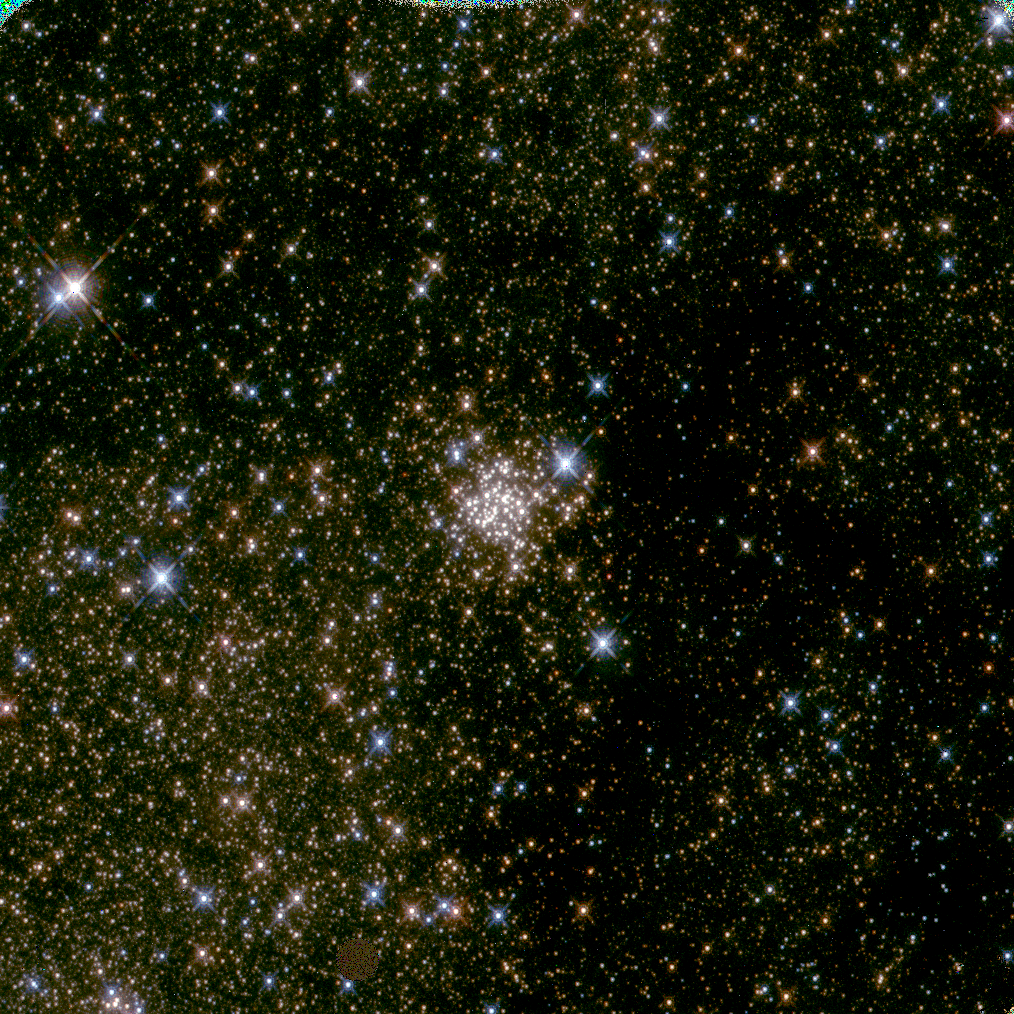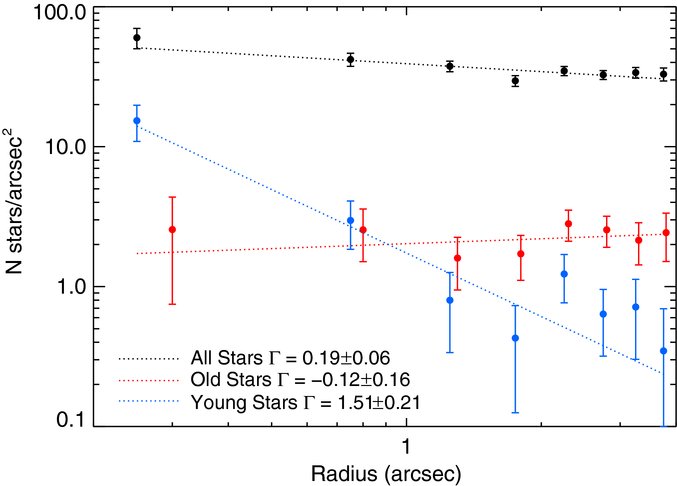Nuclear star clusters in the vicinity of a black hole
Adaptive optics spectroscopy has allowed for spectral identifications of bright stars within ~1 pc of the supermassive black hole and has revealed two very unexpected results. The first surprise was the detection of a wealth of young (<10 Myr) stars in a region where none were expected due to the strong tidal field of the black hole and the low present-day gas densities. The second surprise was the unanticipated dearth of late-type stars near the black hole.
A young (4-8 Myr) nuclear cluster surrounds the Galactic Center black hole and extends out to a radius of 0.5 pc. What is their formation history? This is an essential question in the study of the co-evolution and growth of Super Massive Black Hole and the nuclear star clusters that surround them.
The origin of young stars, where and when the clusters formed, is difficult to explain since the gas densities observed today are orders of magnitude too low for a gas clump to overcome the extreme tidal forces and collapse to form stars. The star clusters' proximity should cause them to be torn apart, and thus their presence within the strong tidal field of our Galaxy's central SMBH still remains a puzzle. If the star clusters formed in situ, then the events leading up to its formation were likely unique and extreme compared to those found in the local solar neighborhood.
For further reading:
- Do et al 2013 Three-dimensional Stellar Kinematics at the Galactic Center: Measuring the Nuclear Star Cluster Spatial Density Profile, Black Hole Mass, and Distance
- Do et al 2012 Testing Stellar Cusp Formation Theories with Observations of the Milky Way Nuclear Star Cluster
Arches and Quintuplet Clusters
The Arches and Quintuplet clusters are some of the most massive, young clusters in the Milky Way.
They are located ~30 pc in projection from the black hole, and formed in one of the most extreme environments in the Galaxy. Again, these clusters experience strong tidal shear forces from the supermassive black hole.
Along with the young star clusters in the immediate vicinity of the Galactic Center, these clusters provide an ideal opportunity to study how stars and clusters form under extreme initial conditions.
For further reading:
- Stolte et al 2006 The Arches cluster - evidence for a truncated MF in the GC?
- Clarkson et al 2012 Proper Motions of the Arches Cluster with Keck Laser Guide Star Adaptive Optics: The First Kinematic Mass Measurement of the Arches
- Hosek et al 2015 The Arches Cluster: Extended Structure and Tidal Radius
- Hosek et al 2019 The Unusual Initial Mass Function of the Arches Cluster
- Hosek et al 2020SPISEA: A Python-based Simple Stellar Population Code for Star Clusters
- Hosek et al 2022 Measuring the Orbits of the Arches and Quintuplet Clusters Using HST and Gaia: Exploring Scenarios for Star Formation Near the Galactic Center

Dearth of Old Stars
Dynamically relaxed star clusters with a massive black hole are predicted to have a steep increase in stellar density toward the black hole. The red giant stars in the nuclear cluster are likely old enough (1-10 Gigayears) to have formed such a cusp.
However, star counts using AO spectroscopy and medium-band imaging have shown that the red giants have a very flat projected surface dnsity profile close to Sgr A*, the central black hole, strongly suggesting that the observed number is far below the predicted. Converting the projected profile to a 3D profile is difficult but it is essential for understanding how the nuclear cluster's formation and evolution differ from current theories. The density profile is also a key input for models of black hole growth.
For further reading:
- Do et al 2009 High Angular Resolution Integral-Field Spectroscopy of the Galaxy's Nuclear Cluster: A Missing Stellar Cusp?
